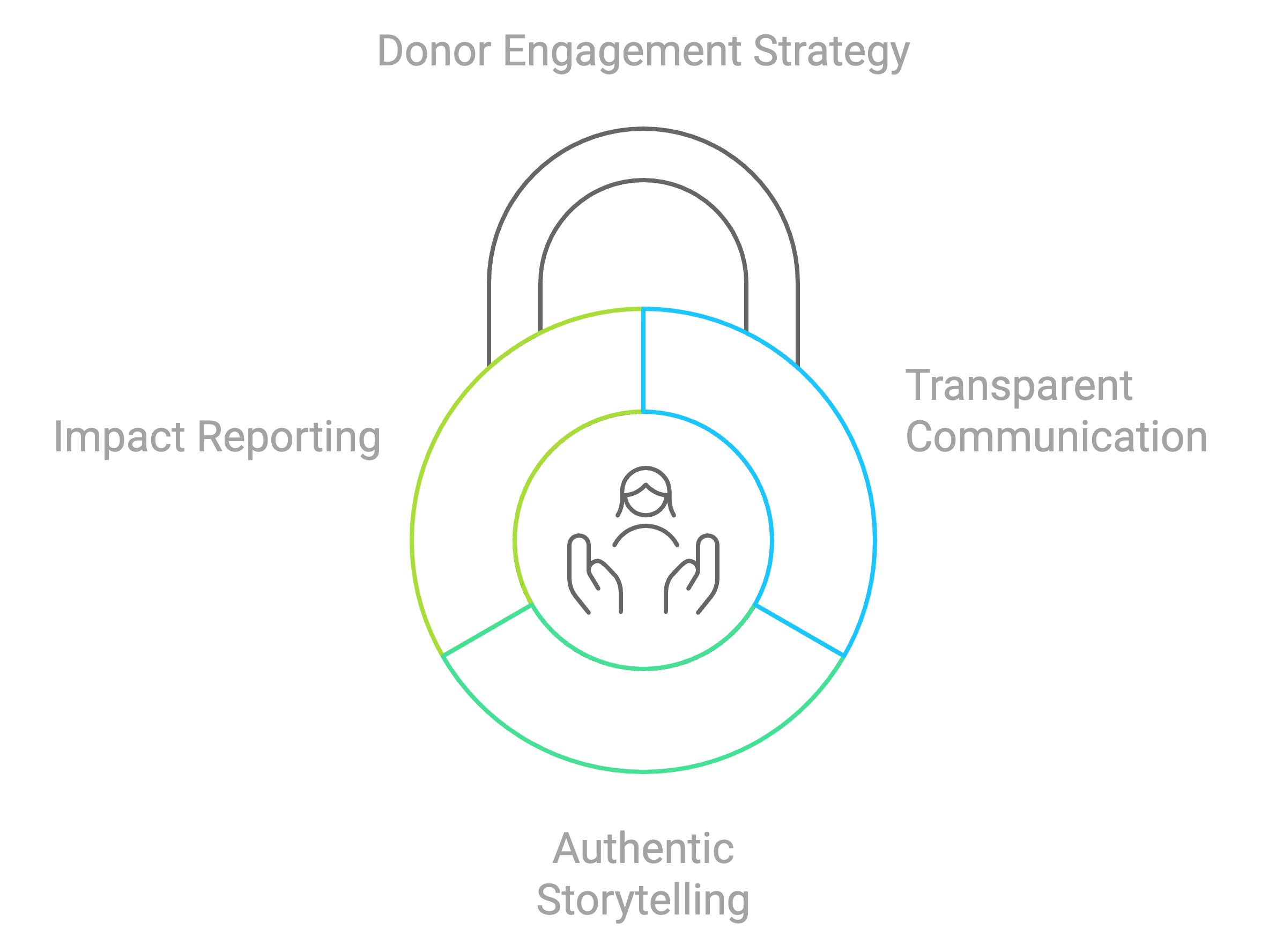Understanding Donor Psychology

What makes someone reach for their wallet when they hear about a cause, while another person scrolls past? The science of donor psychology reveals something surprising: generosity isn't just about wealth or background. It's about deeper psychological triggers that shape how we all make decisions about giving.
What is Donor Psychology?
Donor psychology examines the mental and emotional journey from awareness to action in charitable giving. It explains why two people faced with the same appeal might make radically different giving decisions.
This field combines insights from behavioral science, neurology, and marketing to explain not just why people give, but how to inspire sustained generosity.
The 5 Key Motivators Behind Giving
Emotional Connections
People give because they feel something. Altruism and empathy drive many donations - the genuine desire to help others without expecting anything in return. For nonprofits, creating stories that trigger these feelings works better than simply stating facts.
A real-life example makes all the difference. Showing how Maria went from homelessness to housing creates an emotional bond that statistics alone cannot.
Trust Through Transparency
Modern donors want more than heartfelt promises – they want clear evidence their gifts create real change.
Financial transparency goes beyond publishing annual reports. Show exactly how donations flow through your organization. Translate numbers into tangible impact: "$23 provides a day of shelter" or "Each dollar generates $4 worth of food through our network."
Many organizations fall into the "Trust Me" trap with vague statements like "Your donation helps feed people." Modern donors want specifics – not just helping "people," but providing breakfast for Sarah's three kids while she gets back on her feet after losing her job.
Social Proof and Recognition
Humans are social beings. We often give because others around us give too. When individuals contribute to a cause, they seek not only to make an impact but also to be recognized by their peers.
According to research, seeing friends donate can prompt others to join. The act of giving becomes a shared experience, creating a sense of community and collective achievement.
Recognition strategies that work:
- Personalized acknowledgment based on contribution level
- Public recognition through newsletters or social media
- Exclusive events or opportunities for donors
- Using donor names in impact stories (with permission)
Personal Values and Connection to Cause
People support organizations that reflect their beliefs. Religious charities, environmental groups, or medical research often attract donors with personal connections to these causes.
Many donors (74.3% according to one survey) need to feel passionate about a cause before donating. Personal experiences, like facing an illness or loss, often guide giving decisions.
Questions donors ask themselves: Does this cause fit what I believe in? How will my gift make a difference?
Simple Giving Process
The donation experience itself matters tremendously. According to statistics, 81.4% of people who click on a donate button leave without giving any money.
Top barriers that stop potential donors:
- Required account creation (24% abandon due to this)
- Complicated checkout processes
- Limited payment options
- Poor mobile experience
- Lack of trust indicators
Making the process seamless by reducing friction points can dramatically increase conversion rates.

Best Practices ✓
- Shows cost-per-impact clearly "$1 = 4 meals provided"
- Breaks down program costs "75% programs, 15% operations, 10% fundraising"
- Regular financial updates Monthly dashboards and quarterly reports
- Clear salary transparency Competitive ranges with industry context
What to Avoid ✗
- Vague impact statements "Your donation helps feed people"
- Unclear expense categories "General operational costs"
- Infrequent reporting Annual reports only
- Hidden compensation data No salary information available
Despite knowing these best practices, many organizations still fall into communication traps that erode donor trust. Understanding what not to do is just as crucial as knowing what works.
Why Your Donor Communications Might Be Pushing People Away
Picture this: A donor just gave $100 to your food bank. They open their thank you email expecting to feel that warm glow of making a difference. Instead, they read "Your donation helps feed people in our community." They scroll down looking for more details but find only vague mentions of "operational costs" and a link to last year's annual report.
That spark of connection? It just fizzled out.
Let's talk about four communication traps that turn eager donors into distant memories:
The "Trust Me" Trap
"Your donation helps feed people" feels like being told "just trust us" by a stranger. Modern donors want to see their gift in action – not just helping "people," but providing breakfast for Sarah's three kids while she gets back on her feet after losing her job. They want to know that their $100 turned into 400 meals, served with dignity at your community kitchen every Tuesday.
The Black Box Budget
Saying funds go to "general operational costs" is like telling someone their investment went into "business stuff." Today's donors understand that great programs need solid infrastructure, but they want to see behind the curtain. They respect organizations that say "25% of your gift helps us hire experienced case workers, maintain our food safety certification, and keep our delivery trucks running so we can serve more families effectively."
The Annual Disappearing Act
Imagine starting a friendship where you only hear from the person once a year. That's what annual-only reporting feels like to donors. They don't need daily updates, but they do want to be part of the journey – celebrating milestones, understanding challenges, and seeing steady progress. Each update is a chance to remind them why they fell in love with your mission.
The Salary Silence
Nothing breeds suspicion quite like hidden compensation data. Yes, conversations about nonprofit salaries can be uncomfortable. But donors respect organizations that say "We invest in competitive salaries because experienced staff members help us serve more people more effectively. Here's exactly how we make those decisions..."
The Future of Donor Relationships
Understanding donor psychology isn't just about raising more money – it's about building a community of engaged supporters who believe in your mission as deeply as you do. When you combine transparent communication, authentic storytelling, and meaningful impact reporting, you create lasting relationships that transcend traditional fundraising. The organizations that thrive will be those that view donors not as wallets, but as partners in creating change.
How to Apply Donor Psychology
Tell Stories That Connect
Share specific stories about real people your cause supports. Use photos, names, and updates that show progress. Create urgency with clear goals: "Help reach $5,000 by Friday to fund 100 school lunches."
Ask questions that make people think: "How would your life change if you lost access to safe housing?"
Be Radically Transparent
The "Black Box Budget" turns donors away. Saying funds go to "general operational costs" feels like telling someone their investment went into "business stuff."
Be specific about how funds are used: "25% of your gift helps us hire experienced case workers, maintain our food safety certification, and keep our delivery trucks running."
And surprisingly, sharing challenges builds trust. When you acknowledge setbacks, explain what you've learned, and show how you're adapting, donors see you as more credible.
Segment Your Donors
Different people give for different reasons. Younger donors might like innovation and social impact, while older donors may connect with tradition or history.
Personalize communication based on a donor's past giving, preferences, and engagement level. Cultural sensitivity matters too - take time to understand and respect diverse backgrounds.
The Impact on Fundraising Success
These psychological factors directly affect donation rates:
| Factor | Example | Result |
|---|---|---|
| Clear goal | Campaign progress bar | Higher donation rates |
| Recognition | Social media thank-you | Repeat and referred donations |
| Social proof | "Join 200 donors" callout | Increased participation |
| Storytelling | Testimonial video | Raised engagement |
| Personalization | Name-specific emails | Improved retention |
| Transparency | Shared allocation reports | Ongoing donor trust |

From One-time Givers to Lifelong Supporters
The "Annual Disappearing Act" kills donor relationships. Imagine starting a friendship where you only hear from the person once a year. That's what annual-only reporting feels like to donors.
They don't need daily updates, but they do want to be part of the journey – celebrating milestones, understanding challenges, and seeing steady progress. Each update reminds them why they fell in love with your mission.
Make donors feel like active participants rather than passive observers. Instead of saying "We provided 10,000 meals," try "Your support helped provide 10,000 meals." This subtle shift makes donors feel like part of the change.
Donor psychology isn't just about raising more money – it's about building a community of engaged supporters who believe in your mission as deeply as you do. When you combine transparent communication, authentic storytelling, and meaningful impact reporting, you create lasting relationships that go beyond fundraising.
The most successful organizations view donors not as wallets, but as partners in creating change.
Common Questions About Donor Psychology(FAQ)
Q: How often should we communicate with donors?
A: Follow the "rule of meaningful touch." Reach out when you have something specific to share – a milestone, impact story, or important update. Monthly or quarterly communications work well, with more frequent updates for major donors.
Q: What's the best way to handle negative feedback?
A: Treat it as an opportunity for growth. Respond promptly, listen actively, and share how you're addressing concerns. Donors who voice concerns often care enough to speak up rather than silently disappear.
Q: How do we balance emotional stories with data?
A: Lead with story, support with data. Share Maria's journey from homelessness to housing, then mention that your program has helped 150 families like hers find stable homes this year.
Q: How do we justify administrative costs?
A: Frame them as investment in impact: "We invest in experienced staff and efficient systems because it helps us serve 40% more families with the same resources. Every dollar spent on training our team helps us provide better support."
Q: What's the most common mistake in donor communications?
A: Focusing too much on the organization and not enough on the donor's role in creating change. Make donors the heroes of your story.




